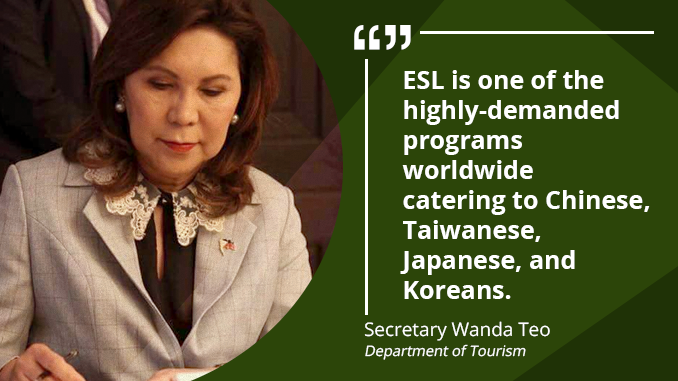With the ever-growing demand for learning English as a Second-Language (ESL) among non-native speakers, the Department of Tourism (DOT) seeks to attract more Koreans to come to the Philippines to get their ESL training.
In line with its ESL program, the DOT Korea Office recently hosted over a hundred Korean students and parents at the Philippine Study Abroad Fair at the Samsung Textile Center in Seoul.
Tourism Secretary Wanda Teo said the Philippine ESL is one of the highly-demanded programs worldwide catering to Chinese, Taiwanese, Japanese, and Koreans alike, considering the country’s positioning as the world’s third largest English-speaking nation.
“It is very encouraging to see that more and more Koreans, Japanese, Chinese, and Taiwanese, among other foreign students are considering the Philippines over other English-speaking nations for their studies. With a booming tourism and improving economy, it is no surprise that the Philippines has become one of the choice destination of foreigners for high quality and affordable education, as well as for fun vacations, ” said Teo.
Organized for the ninth time in partnership with www.pilja.com, this year’s edition featured 15 of the leading ESL institutions in Cebu, Baguio, and Iloilo to talk about their programs and admission process for Korean students and parents.
Philippine Study Abroad fair has become the “go-to” for potential Korean students planning to take ESL in the Philippines. In addition to promoting tourism, it also aims to help students and their parents understand the Philippine ESL system.
“Hopefully, this will also help keep our best teachers here, closer to their family and friends,” added Teo.
South Korea holds the record for breaking the 1.4 million mark, with a total of 1,475,081 arrivals in 2016, making up almost one-fourth of the country’s total visitor arrivals at 24.72 percent. This is 10.11 percent higher than the 1.3 million Korean tourists that came to the Philippines some two years ago.
For the first half of the year, the Korean market has sustained its spot as the country’s top source for inbound traffic, with 795,085 arrivals, representing 23.68 percent of the total market share.

